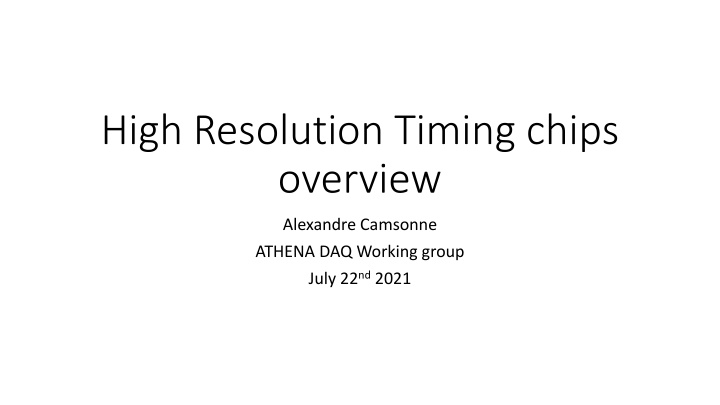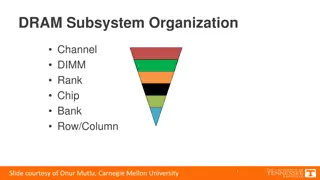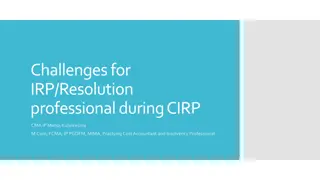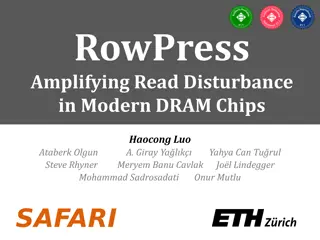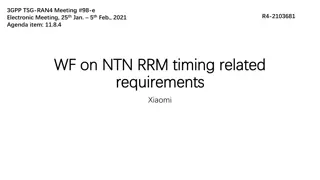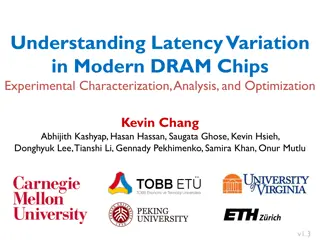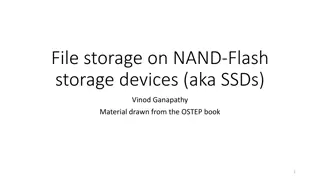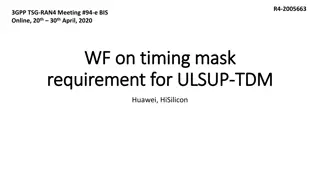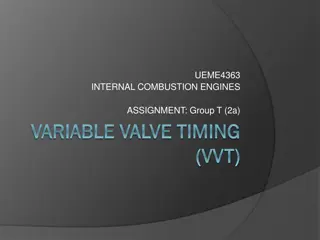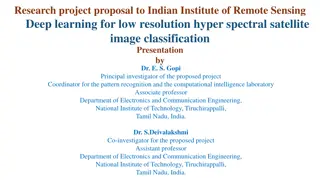High Resolution Timing chips overview
This overview delves into timing chips for high-resolution applications, discussing various types such as TOF requirements, TDC chips, sampling chips, and more. It evaluates different options like FADC and analog memory chips, highlighting considerations like timing resolution, clock jitter, and compatibility with streaming readout. The conclusion touches on the availability of multiple chips, the preference for FADC despite high power consumption, and the potential of new analog memory designs. It provides valuable insights for choosing the right chips for high-resolution timing needs.
Download Presentation

Please find below an Image/Link to download the presentation.
The content on the website is provided AS IS for your information and personal use only. It may not be sold, licensed, or shared on other websites without obtaining consent from the author.If you encounter any issues during the download, it is possible that the publisher has removed the file from their server.
You are allowed to download the files provided on this website for personal or commercial use, subject to the condition that they are used lawfully. All files are the property of their respective owners.
The content on the website is provided AS IS for your information and personal use only. It may not be sold, licensed, or shared on other websites without obtaining consent from the author.
E N D
Presentation Transcript
High Resolution Timing chips overview Alexandre Camsonne ATHENA DAQ Working group July 22nd2021
Workshops RD51 : https://indico.cern.ch/event/1040996/ Streaming workshop 2021 https://indico.mit.edu/event/1/ Timing workshop upcoming https://indico.cern.ch/event/861104/
TOF requirements New detectors such as thin gap MRPC, MCPPMT, LAPPD, LGAD can reach 40 ps timing resolution and down to 20 ps Readout timing resolution and clock jitter needs to be neligible ideally less than 5 ps for 20 ps detectors, could tolerate 25 ps for 40 ps Should be compatible with streaming readout
TDC chips Omega Group / Weeroc ALTIROC candidate for RP readout CERN NINO (6ps) +HPTDC TDC (25ps) PicoTDC : 64 channels https://indico.cern.ch/event/1040996/contributions/4402641/attachments/2265267 /3846122/PicoTDC_RD51.pdf GSI PADI
Sampling chips https://indico.cern.ch/event/1040996/contributions/4402546/attach ments/2265075/3845732/Digitizers_RD51Workshop.pdf Analog memory chips Existing ( not ideal because of dead time but could reduce using several chips ) DRS4 SAMPIC PSEC4 Newer less deadtime and self triggering DRS5 (PSI) AARDVARC (NALU)
Sampling chips FADC Alphacore A9B1G: Wide Input BW, 9-bit, 1GS/s ADC A10B2G: 10 bit, 2.4GS/s, Ultra Low Power ADC TI ADS54J60 2 ch 16 bit 1 GS/s 10x10 mm2 1.35 W/Ch ADC12DL3200 2 ch 12 bit 3.2 GS/s (or 6.4 GS/s 1 ch) 17x17 mm2 3.15 W ADC12DJ5200RF 2 ch 12 bit 5.2 GS/s (or 10.4 GS/s 1 ch) 10x10 mm2 4 W
Conclusion Many chips available Preference for FADC but high power consumption New analog memory might work with new design but less performant than FADC ( better energy efficiency)
